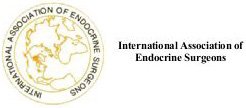Conditions
Fibroadenoma
PHYSIOLOGY
A fibroadenoma is, solid breast tumour that often occurs in young women under the age of 30. It is made up of fibrous and glandular tissue. It is usually painless, round, easily movable with distinct borders and may feel like a marble within your breast. It may vary in size, sometimes being too small to be felt and at other times greater than 3 inches in diameter. Single or multiple fibroadenomas may be present. A biopsy of the fibroadenoma is performed to determine its nature.
CAUSE
The exact cause of fibroadenomas is unclear; however, reproductive hormones may have a role to play in their development. Fibroadenomas have been known to become larger during pregnancy and shrink after menopause.
Duct Ectasia
PHYSIOLOGY
Duct ectasia is a condition characterised by widening of a milk duct beneath the nipple along with thickening of the duct walls and clogging of the duct with a sticky, thick substance. There may be a dirty white, green, or black nipple discharge, pain and redness in the nipple and surrounding tissue and a thickening or lump near the blocked milk duct.
CAUSE
This condition may occur due to age-related changes in the breast with glandular tissue being replaced by fatty tissue, smoking which has been associated with inflamed and widened milk ducts, and inversion of the nipple which may cause obstruction, infection, and inflammation of the milk ducts.
INDICATIONS FOR SURGERY
The condition may resolve on its own in some cases. If conservative therapy such as pain medications and antibiotics do not resolve the symptoms, surgical removal of the affected milk duct is indicated. The procedure can be performed through a tiny incision made at the periphery of the areola (the coloured area around the nipple).
Simple Breast Cysts
PHYSIOLOGY
Simple breast cysts are fluid-filled sacs that develop in the breast tissue. They may occur as single or multiple cysts in one or both breasts and are circular or oval shaped. They can develop in women at any age but are mostly seen in the 30 to 50-year age group. They vary in size from microscopic to 1-2 inches. Simple cysts are thought to develop due to the reaction of glandular breast tissue to hormonal changes and may become painful and large just before a menstrual period. In some cases, the cysts disappear after menopause.







